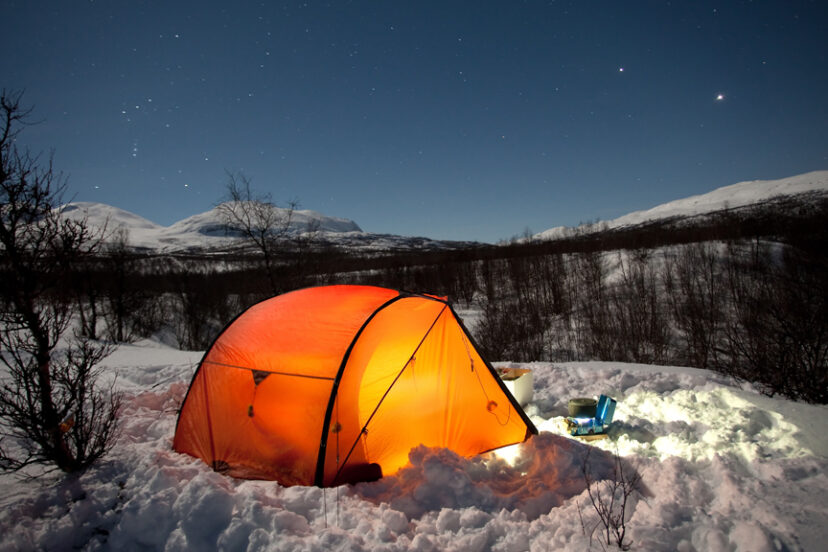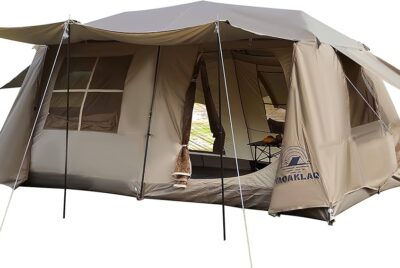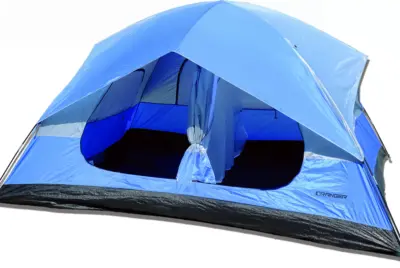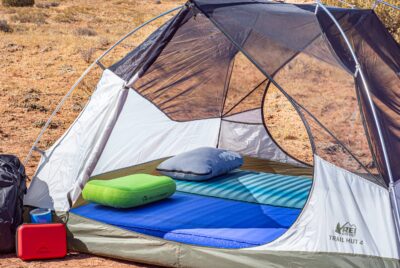Heat for Tent Camping
Introduction
Heat for tent camping is a subject which should be carefully considered in advance of a camping outing, especially if the forecast is for chilly or cold temperatures at your destination. Imagine the crackling sounds of a campfire, the starlit sky above, and the crisp, cool air – camping can be an exhilarating experience, but it can also get chilly. That’s where the importance of reliable heat for camping comes into play. In this comprehensive guide, we’ll explore various heating options to keep you warm and cozy during your outdoor adventures.
I. Understanding the Basics of Heat for Tent Camping
Understanding the basics of heat for camping is essential for anyone looking to embark on outdoor adventures. When the sun sets, temperatures can drop significantly, making a reliable heat source crucial for comfort and safety. Portable heaters, insulated sleeping gear, and proper clothing are fundamental tools in your camping arsenal. Portable heaters, such as propane or electric options, offer versatile solutions, catering to different camping scenarios. Insulated sleeping gear, including high-rated sleeping bags and reflective sleeping pads, ensures a warm and cozy night’s sleep. Additionally, dressing appropriately with a layered clothing system, starting with moisture-wicking base layers and ending with waterproof outer layers, helps you stay warm in various weather conditions. By grasping these fundamental elements, you set the stage for a more enjoyable and comfortable camping experience.
II. Types of Portable Heaters in Heat for Tent Camping
1. Propane Heaters
Propane heaters (link to Amazon) are a popular and reliable choice for campers seeking efficient and portable heating solutions. These heaters utilize propane as fuel, providing a consistent and controllable heat source for chilly outdoor adventures. Available in various sizes and designs, propane heaters cater to different camping needs, from compact models suitable for solo trips to larger units ideal for group outings. One of the key advantages of propane heaters is their ease of use – simply connect a propane tank, ignite the burner, and enjoy the warmth. They are versatile, working well in both tented and open camping spaces. It’s crucial to prioritize safety by placing propane heaters on stable surfaces, ensuring proper ventilation, and having extra fuel on hand. With their convenience and effectiveness, propane heaters have become a go-to choice for campers looking to stay warm and cozy during cool nights in the great outdoors..
2. Electric Heaters
Electric heaters (link to Amazon) provide a modern and convenient solution for campers seeking a reliable heat source in outdoor settings. While less common than propane heaters, electric options are gaining popularity, especially in camping sites with power access. These heaters are typically lightweight and compact, making them easy to transport and set up. Some models come with additional features such as adjustable thermostats and timers, allowing for customized comfort. It’s important to note that the availability of power sources is a critical factor when considering electric heaters for camping. Campers should be mindful of their location and plan accordingly, ensuring access to electrical outlets or using alternative power solutions like portable generators. Despite their dependency on power, electric heaters offer a clean and efficient way to stay warm during chilly camping nights, making them a viable choice for those who prioritize convenience and ease of use.
3. Wood-Burning Stoves
Wood-burning stoves (link to Amazon) add a touch of nostalgia and practicality to camping, offering a traditional and versatile heating option. These stoves not only provide warmth but also allow campers to cook their meals, merging two essential camping activities into one. They are particularly favored by outdoor enthusiasts who appreciate a back-to-basics approach and enjoy the process of gathering and using natural fuel sources. Wood-burning stoves come in various sizes, suitable for both solo campers and larger groups. Beyond their functional aspects, these stoves contribute to the overall camping experience, creating a rustic ambiance with the crackling sounds of burning wood. However, it’s important to use wood-burning stoves responsibly, following Leave No Trace principles and ensuring that the chosen camping site allows for their use. With the right precautions, wood-burning stoves can enhance the camping experience, providing warmth, sustenance, and a connection to nature.
III. Insulated Sleeping Gear: Your Bedtime Warmth Strategy
Investing in insulated sleeping gear is a cornerstone of ensuring a cozy and comfortable night’s sleep during camping adventures. This strategy involves choosing high-quality sleeping gear (link to Amazon) designed to trap and retain body heat, keeping you warm in the cool outdoor temperatures. Sleeping bags with high insulation ratings and innovative materials, coupled with reflective sleeping pads, create a barrier between you and the cold ground. Additionally, some campers opt for heated sleeping bags that provide an extra level of warmth, often powered by rechargeable batteries. Understanding the temperature rating of your sleeping gear is crucial – it should match or exceed the expected nighttime temperatures. By prioritizing insulated sleeping gear, campers can transform their sleeping area into a snug retreat, enhancing the overall camping experience and ensuring restful nights under the stars. Check this link for insulated sleeping gear available on Amazon.
IV. Dressing for Success: Clothing for Cold Weather Camping
The importance of clothing in cold weather camping cannot be overstated; it is the frontline defense against the elements, playing a pivotal role in keeping campers warm and comfortable. The key to effective cold-weather dressing lies in layering. Starting with a moisture-wicking base layer to pull sweat away from the body, followed by insulating layers like fleece or down to trap and retain heat, and finishing with a waterproof and windproof outer layer to shield against rain and harsh winds. This layered approach provides versatility, allowing campers to adjust their clothing to changing weather conditions. Properly dressed, campers can enjoy the outdoors without succumbing to the chill, ensuring that they stay warm and dry throughout their camping experience. Choosing the right clothing is not just a matter of comfort; it is a fundamental aspect of safety and well-being during cold weather camping excursions. You may, of course, find appropriate cold weather clothing in many fine stores, but here is a link to Amazon which may suggest some items to consider.
V. Safety First in Heat for Tent Camping: Tips for Using Camping Heaters
Heat for Tent Camping: Heater Placement
The importance of camping heater placement cannot be emphasized enough when it comes to ensuring both comfort and safety during outdoor adventures. Whether you’re using a propane heater, electric heater, or wood-burning stove, where you position it can make a significant difference. Placing the heater on a stable and flat surface is crucial to prevent accidental tipping, which could lead to injuries or damage. Equally important is maintaining proper ventilation. Propane heaters, for example, produce carbon monoxide, and using them in enclosed spaces without adequate airflow can pose serious risks. It’s essential to position the heater where there is good air circulation, especially in tents or small shelters. Additionally, be mindful of flammable materials – ensure a safe distance from tents, sleeping bags, and any other combustible items. By carefully considering and maintaining proper camping heater placement, campers can enjoy the warmth without compromising their safety or the safety of their camping environment.
Heat for Tent Camping: Emergency Preparedness
Emergency preparedness is a fundamental aspect of responsible camping, ensuring that campers are equipped to handle unforeseen challenges in the great outdoors. A well-packed emergency kit is a cornerstone of preparedness, containing essentials such as first aid supplies, extra fuel for heaters or stoves, a reliable communication device, and necessary medications. Campers should familiarize themselves with basic first aid procedures, addressing common outdoor injuries promptly. Understanding the layout of the camping area, including the location of emergency exits and nearby medical facilities, adds an extra layer of preparedness. Additionally, having a clear plan for communication and knowing how to summon help in case of emergencies is crucial. By prioritizing emergency preparedness, campers not only enhance their safety but also gain the confidence to navigate unexpected situations, fostering a sense of self-reliance in the wild.
VI. Heat for Tent Camping: Balancing Comfort and Conservation
Striking a delicate balance between comfort and conservation is essential for responsible camping, where the beauty of nature and the comfort of campers harmonize without compromising the environment. Opting for eco-friendly heating options, such as wood-burning stoves or portable solar heaters, allows campers to enjoy warmth while minimizing their ecological footprint. Embracing Leave No Trace principles ensures that campsites remain pristine, with minimal impact on the surrounding flora and fauna. Choosing reusable and sustainable camping gear, such as eco-friendly cookware and biodegradable toiletries, further contributes to conservation efforts. Campers can relish the comforts of the outdoors without sacrificing the integrity of nature, creating a symbiotic relationship where enjoyment coexists with the responsibility to protect and preserve the environment for future generations of outdoor enthusiasts.
Conclusion: Embracing Heat for Tent Camping
With the right knowledge and gear, braving the cold during camping trips becomes a breeze. Whether you opt for a propane heater, insulated sleeping gear, or layered clothing, the key is to be prepared. So, venture out into the wild, stay warm, and make unforgettable memories under the starry sky.
Frequently Asked Questions (FAQs)
1. Can I use a propane heater inside my tent?
It’s not recommended. Propane heaters can produce carbon monoxide, posing a serious risk in enclosed spaces. Always use heaters in well-ventilated areas.
2. How do I choose the right sleeping bag for cold weather camping?
Look for a sleeping bag with a lower temperature rating than the expected nighttime temperature. Consider factors like insulation type, shape, and size.
3. Are electric heaters practical for remote camping locations?
They can be, but you need access to a power source. Consider alternative power options like portable generators or solar panels for off-grid camping.
4. What’s the ideal clothing layering system for camping in cold weather?
Start with a moisture-wicking base layer, add insulating layers like fleece or down, and finish with a waterproof and windproof outer layer.
5. How can I minimize my environmental impact while camping with a heater?
Opt for eco-friendly heating options like wood-burning stoves or portable solar heaters. Follow Leave No Trace principles to minimize your footprint.




